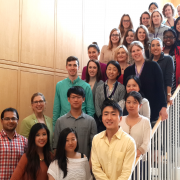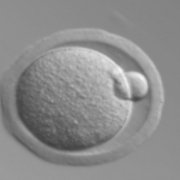
Written by: Hunter Rogers
The technology behind EVATAR was developed by a team of engineers at Draper Labs for the purpose of culturing multiple tissues together for extended periods of study. In the case of the EVATAR system, ovary, fallopian tube, uterus, cervix, and liver were used. The system enables this approach through the combination of modules, which house each of the tissues, and micro-scale channels that connect each of the modules. The channels act as the circulatory system for the tissues, bringing fresh nutrients, eliminating cellular waste, and enabling any factors that are secreted by a tissue to be shared with the other tissues on the system.
The system is connected to a computer, that can be thought of as the brain of EVATAR. It controls the pumps in the system, which pump nutrients similar to our hearts work, and allows for precise control of fluid flow. In a standard experiment, fresh media, which contains nutrients that keep the tissues healthy, is pumped from the donor module (DO) to the first tissue module (T1). Media from T1, along with secreted factors from the first tissue, is then pumped to the second tissue module (T2). From there, media is pumped to the third (T3), fourth (T4), and fifth (T5) tissue modules, delivering a fresh batch of nutrients and secreted factors to each of the tissues along the way.
After this first pass through the system, the media is then recirculated from T5 back to T1 where and the sequence between tissue modules is repeated several times so that the tissues are exposed to the same environment. Following this recirculation period, media is finally pumped from T5 to the Acceptor module (AC), where it can be collected for analysis.
Read the Nature Communications research article
Evatar was funded entirely by the National Institutes of Health
Learn more about Evatar's biology




